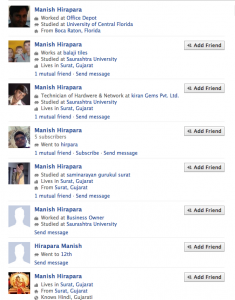Facebook poised for international growth
I used to be all alone in the world. A few years ago, if you did a Google search on “Manish Hirapara,” you got results all about me and all the things I was up to. I did a search on Facebook with my name the other day. There are now dozens of my namesake in the world.
So what does all this mean? Facebook is set to conquer the global markets in a way no other has. ECommerce sites still have to deploy localized websites to transact with consumers in their language & currency of choice. Facebook on the other hand, is able to put a truly global site in place without the need to localize anything — except maybe the ads.
An agency I work with recently told me about their work with a major consumer brand in Brasil & Mexico. All the work was done on facebook.com (not facebook.com.br) and they were able to take their brand to over 250k “likes” in just a few weeks.
Facebook had its IPO recently and investors summarily beat it down. Emerging market consumers are just coming online. If Facebook can continue its phenomenal penetration into those markets, particularly with mobile consumers, it will be worth quite a bit more than the IPO value…
